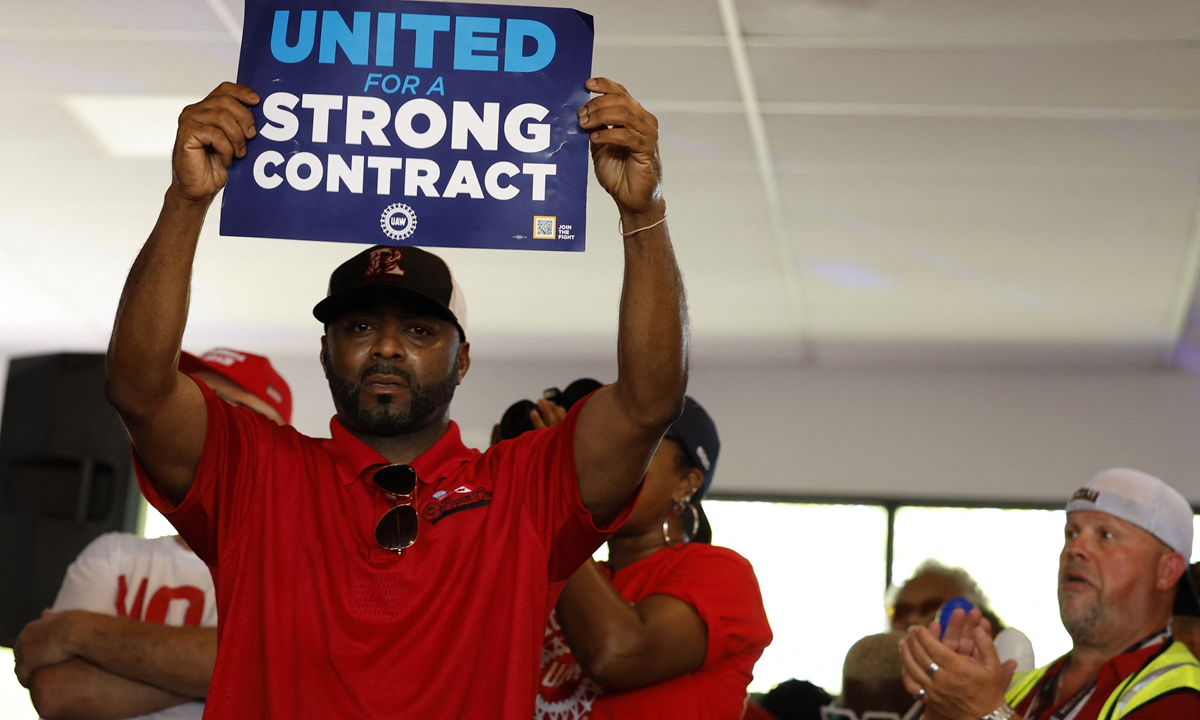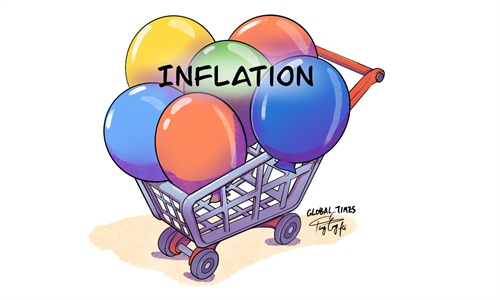Behind US auto strike: the rise of EVs and structural adjustment of economic development

United Automobile Workers (UAW) members and their supporters gather at the UAW Region 1 office in Warren, Michigan on August 20, 2023. Photo: AFP
The most talked about news in the US last week, apart from Trump's swift parole after turning himself in, was the escalating conflict between the Detroit auto trio and the United Auto Workers.With Trump's popularity on the rise, there is an expectation that autoworkers, traditionally supported the Democratic Party, will switch sides ahead of the upcoming general election. This will further complicate the situation for Biden administration.
Most autoworkers favor granting unions the authority to declare a general strike in the absence of an agreement. The Anderson Economic Group, a think-tank based in the United States, approximates that a strike lasting 10 days could result in an economic loss of approximately $5.6 billion.
Since 2010, US auto manufacturing jobs have risen significantly, but with the advent of AI and EVs, almost all predictions point to the midday sun will fall and mass layoffs will start soon.
The main concerns of the American autoworkers are twofold. First, a shift to EV production could lead to job losses and plant closures. Second, most of the battery production companies are joint ventures, and they may not prioritize union demands.
The fears of new tech have spread to many areas, such as the Hollywood writers' strike linked to the use of AI.
A few weeks ago, concerned unions in Arizona also launched a petition asking senators and representatives to block TSMC from applying for EB-2 visas, fearing that many of the technicians brought in from the Chinese island of Taiwan would take jobs away from American workers.
To block the impact of China's electric vehicles and batteries on its auto industry, Washington has increased subsidies for electric cars and batteries produced by companies in the US, and stipulated that only electric vehicles with final assembly in North America are eligible for the incentives. Furthermore, a certain percentage of the contained use of key minerals must be extracted or processed in either the US or a country with which the US has an FTA or a country that has recycled in North America.
Washington is trying to control imports from Chinese carmakers, but it can't stop China's EVs development, which is gradually adding pressures to the production efficiency in the US.
The most frustrating thing is that the US autoworkers think they are getting a lot less, while the big profits in recent years have gone into the pockets of the bosses.
According to US media estimates, the union representing 150,000 autoworkers put forward a negotiation proposal, asking for a direct wage from 60 dollars/hour/person, doubled to nearly 150 dollars. This related to the persistent issues within the current labor distribution system.
Biden has always claimed that "Biden economics" will bring better benefits to American workers, but reforming the distribution system is not easy, and it involves the change of the nature of the US capitalism.
The auto union negotiation is a profound reflection of the intensity of competition among major industrial countries under globalization, which involves the structure adjustment of economic development and inevitably gives rise to various social problems.
Therefore, the outcome of this negotiation will have a substantial impact on the Biden administration's strategy of trying to bring back the US manufacturing industry with China as its main competitor.
In the short term, Washington will do whatever it takes to curb China's electric vehicle to maintain its EVs production, but in a long time, Washington will have to bear a huge social impact while it fails to retain the competitive advantage in this industry.
In this global competition, the Americans will increasingly realize that it cannot maintain dominant advantages in all industrial sectors. It must learn to accommodate and adjust to the growing power of developing countries, such as China's industry.

